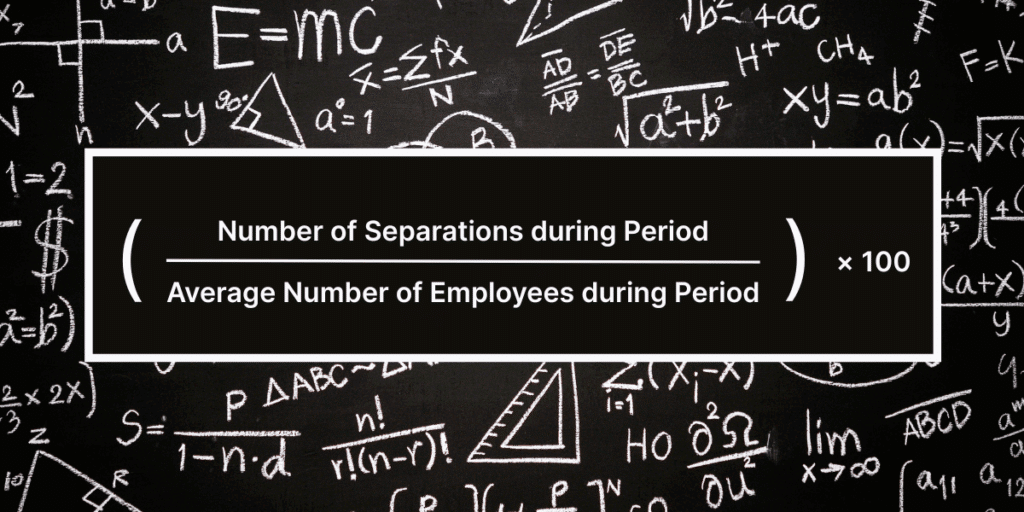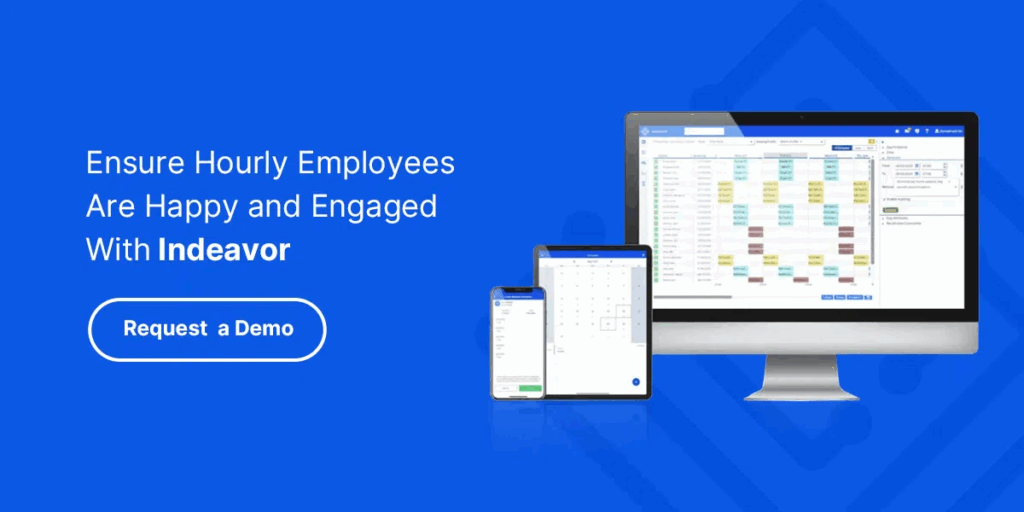Employee turnover is a critical challenge facing organizations today. It refers to the rate at which employees leave a company and need to be replaced. High turnover can disrupt operations, increase labor costs, and reduce workforce efficiency. For businesses that rely on shift-based workforces, such as manufacturing, government agencies, and energy sectors, understanding why employee’s turnover and how to prevent it is essential to maintaining operational success.
The costs of turnover are significant, not just in direct recruiting and training expenses, but also in lost productivity, diminished morale, and compliance risks. Indeavor views employee turnover not as an inevitable HR problem but as a preventable operational issue. By leveraging strategic scheduling, workforce management technology, and data-driven insights, companies can reduce turnover and improve retention sustainably.
Understanding Employee Turnover
Employee turnover refers to the rate at which employees leave an organization and are replaced by new hires. It includes voluntary departures (resignations) and involuntary ones (layoffs or terminations). Businesses closely monitor turnover because a high turnover rate can indicate underlying problems such as low employee satisfaction or poor management.
The types of employee turnover broadly fall into:
- Voluntary turnover: When employees leave by choice, often for reasons like better pay, career growth, or dissatisfaction.
- Involuntary turnover: When employers terminate employees due to performance, restructuring, or other reasons.
- Functional turnover: When a low-performing employee leaves, resulting in a positive impact on the team or organization.
- Dysfunctional turnover: When a top-performing employee exits, often creating disruption and loss of valuable skills or knowledge.
High turnover can have measurable negative effects. A report from Gallup reveals that U.S. businesses lose a staggering $1 trillion every year due to voluntary turnover. Frequent departures also lower team morale and delay projects as remaining staff are forced to absorb extra responsibilities.
Worse, frequent departures disrupt the stability of frontline operations. In industries like manufacturing, energy, and government, this instability can have safety implications. That’s why organizations with mission-critical roles must take turnover prevention seriously.
What is the main cause of staff turnover?
What is the main cause of staff turnover? According to research by Gallup, 50% of employees leave their jobs because of their manager or direct supervisor, highlighting the critical role leadership plays. Other common reasons include a lack of career advancement, insufficient compensation, poor work-life balance, and a lack of recognition.
Employee turnover often stems from systemic organizational issues like unclear expectations, inadequate communication, and poor cultural fit. For example, a survey by Forbes found that companies with poor employee engagement see 23% higher turnover rates.
The business impact of turnover is substantial. Each departure costs companies not only recruitment and training expenses but also lost productivity and morale. The disruption caused by frequent staff changes can delay projects and decrease customer satisfaction.
Measuring Employee Turnover
Accurately measuring turnover is crucial for identifying trends and the effectiveness of retention efforts. The employee turnover rate formula is:

Understanding how do you calculate employee turnover rate involves counting all separations—both voluntary and involuntary—over a set period (usually annually) and dividing by the average headcount during that period.
The annual employee turnover rate is often used as a key HR metric to benchmark against industry averages. For instance, in 2024 the average annual turnover rate across all industries is approximately 24.5%, but this varies widely by sector.
Key Strategies to Reduce Employee Turnover
Reducing employee turnover requires a proactive, multi-pronged approach tailored to the unique needs of your workforce. Rather than relying on one-size-fits-all solutions, organizations should analyze internal feedback and workforce data to develop targeted strategies that address the root causes of attrition. From cultural alignment to operational efficiency, sustainable retention starts with understanding what motivates employees to stay.
Build a culture of trust and flexibility
One of the most effective ways to reduce employee turnover rate is fostering a workplace culture where employees feel trusted, valued, and supported. Flexibility in work hours, remote work options, and open communication channels contribute significantly to retention.
Harvard Business Review found that companies with high employee engagement experience 59% less turnover. Engagement is closely tied to how empowered employees feel in their roles, so providing autonomy and soliciting feedback regularly can deepen that sense of ownership and belonging. Organizations that listen and adapt to employee needs build stronger, longer-lasting teams.
Provide competitive compensation and benefits
Competitive pay and comprehensive benefits are fundamental retention tools. Organizations should regularly benchmark salaries against market rates to ensure they are attracting and keeping talent. Benefits like health insurance, retirement plans, paid time off, and wellness programs increase overall job satisfaction.
Addressing workload and work-life balance is also critical. Burnout is a significant contributor to employee exits, especially in demanding industries. Employers who encourage reasonable hours and support mental health initiatives demonstrate they value employee well-being.
Improve onboarding and early engagement
Effective onboarding sets the tone for an employee’s experience and can significantly impact retention. Structured onboarding programs that include job-specific training, culture orientation, and early performance feedback reduce early turnover.
According to SHRM, organizations with strong onboarding processes improve new hire retention by 58%. Early engagement fosters a sense of belonging, increasing motivation and loyalty from the beginning of the employee lifecycle.
Support internal mobility and succession planning
Employees who see a future within the organization are more likely to stay. Promoting from within and offering cross-training opportunities foster a culture of growth and long-term commitment. This not only fills skill gaps internally but also demonstrates that the company values its existing talent.
Succession planning also ensures business continuity and boosts morale. Clear internal pathways for advancement signal to employees that their careers can evolve within the organization. When staff members feel their goals are aligned with company direction, loyalty and productivity increase.
Invest in leadership training and accountability
Managers play a critical role in employee retention. Organizations should prioritize leadership development programs and hold managers accountable for engagement and turnover metrics. Equipping leaders with emotional intelligence and communication skills is essential for building strong team dynamics.
Well-trained managers are better equipped to support, motivate, and retain their teams. Leadership effectiveness directly correlates with job satisfaction, performance, and long-term commitment. A culture of accountability at the leadership level sets the tone for the entire organization.

Using Turnover Data to Drive Change
Using data to prioritize retention programs allows companies to focus resources on the most impactful areas. For example, analyzing exit interviews and turnover patterns by department or role helps identify hotspots requiring intervention.
Effective data analysis involves:
- Analyzing exit interview feedback to uncover common reasons employees leave
- Segmenting turnover rates by department, role, or location to identify problem areas
- Tracking voluntary vs. involuntary turnover to tailor retention strategies
- Calculating the financial impact of turnover, including recruiting and training costs
- Comparing turnover rates against industry benchmarks to gauge performance
- Monitoring turnover trends over time to evaluate effectiveness of retention initiatives
- Integrating turnover insights with broader workforce analytics for strategic planning
By integrating workforce insights with business goals, leaders can align retention strategies with overall organizational priorities. For instance, if high turnover occurs in customer service, investing in training and better scheduling may improve both retention and customer satisfaction.
Interpreting employee turnover data correctly is essential for informed decision-making. Beyond the raw turnover rate, companies should assess costs associated with employee churn, including recruiting, onboarding, and lost productivity. Benchmarking turnover rates against industry standards helps businesses understand their relative performance and set realistic improvement targets.
The Role of Technology in Turnover Prevention
Technology is transforming how to reduce employee turnover for organizations. Digital workforce management platforms enable real-time scheduling, communication, and engagement, which are proven to increase job satisfaction. Tech-forward companies are better at retaining talent because they empower employees with flexible scheduling tools and personalized career development resources.
By focusing on accurate measurement, understanding the reasons for employee turnover, and implementing data-driven strategies supported by modern technology, businesses can significantly lower their turnover rates. Aiming for low turnover not only reduces costs but fosters a more motivated and stable workforce, setting the foundation for long-term success.
Indeavor helps organizations in complex, shift-based industries streamline workforce operations with scalable, secure scheduling and workforce management solutions. With features like mobile access, skills tracking, and proactive absence management, Indeavor enables both operational efficiency and improved employee satisfaction. Schedule a demo to see how Indeavor can help reduce your turnover rate.
About the Author
Claire Pieper is the Digital Marketing Specialist for Indeavor. In her role, she specializes in crafting strategic and engaging content, ensuring that customers are well-informed. Claire is dedicated to enhancing the customer experience and optimizing the user journey through Indeavor’s solutions. To learn more or get in touch, connect with Claire on LinkedIn.



